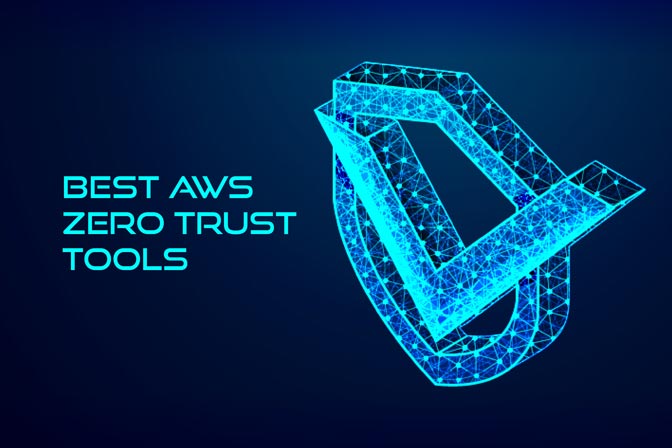Implementing a Zero Trust architecture in an AWS environment involves leveraging various tools and services to ensure secure access, continuous monitoring, and effective identity management. Here’s a list of some of the best AWS tools and third-party solutions that support a Zero Trust framework:
1. AWS Identity and Access Management (IAM)
- Overview: IAM allows you to control access to AWS services and resources securely. It supports fine-grained access control and the principle of least privilege.
- Key Features:
- Create and manage AWS users and groups.
- Define permissions with IAM policies.
- Implement role-based access control (RBAC).
2. AWS Single Sign-On (SSO)
- Overview: AWS SSO provides a unified sign-on experience for users to access multiple AWS accounts and applications.
- Key Features:
- Centralized access management.
- Integration with Active Directory and SAML-based identity providers.
- MFA support to enhance security.
3. AWS Organizations
- Overview: AWS Organizations enables you to manage multiple AWS accounts centrally.
- Key Features:
- Policy-based management of accounts.
- Service control policies (SCPs) for governance.
- Billing consolidation across accounts.
4. Amazon Virtual Private Cloud
- Overview: VPC allows you to provision a logically isolated section of the AWS cloud where you can launch AWS resources.
- Key Features:
- Network segmentation for better security.
- Security groups and network access control lists (ACLs) for fine-grained control over inbound and outbound traffic.
- VPC peering and AWS Transit Gateway for connecting different VPCs securely.
5. AWS CloudTrail
- Overview: CloudTrail is a service that enables governance, compliance, and operational and risk auditing of your AWS account.
- Key Features:
- Logs API calls for AWS services.
- Enables real-time monitoring and auditing of activities.
- Integration with AWS CloudWatch for alerts.
6. Amazon GuardDuty
- Overview: GuardDuty is a threat detection service that continuously monitors for malicious activity and unauthorized behavior.
- Key Features:
- Machine learning and anomaly detection for threat identification.
- Integration with CloudTrail and VPC Flow Logs for comprehensive visibility.
- Automated remediation workflows.
7. AWS Web Application Firewall (WAF)
- Overview: AWS WAF helps protect your web applications from common web exploits.
- Key Features:
- Customizable rules for filtering web traffic.
- Rate-based rules to mitigate DDoS attacks.
- Integration with Amazon CloudFront and Application Load Balancer.
8. AWS Systems Manager
- Overview: AWS Systems Manager provides operational data from multiple AWS services to automate tasks across your AWS resources.
- Key Features:
- Inventory management for AWS resources.
- Patch management to maintain security compliance.
- Automation for recurring tasks.
9. AWS Security Hub
- Overview: Security Hub provides a comprehensive view of your security state in AWS and helps you manage security alerts and compliance status.
- Key Features:
- Aggregates alerts from multiple AWS services.
- Supports integration with third-party security solutions.
- Compliance checks against industry standards.
10. Amazon Cognito
- Overview: Cognito enables user sign-up, sign-in, and access control for web and mobile apps.
- Key Features:
- User identity management with support for social identity providers.
- Multi-factor authentication (MFA) for enhanced security.
- Integration with API Gateway for secure API access.
11. AWS Secrets Manager
- Overview: Secrets Manager helps you protect access to your applications, services, and IT resources without the upfront investment and on-going maintenance costs of operating your own infrastructure.
- Key Features:
- Securely store and manage secrets, such as API keys and database credentials.
- Automatic rotation of secrets to enhance security.
- Fine-grained access control using IAM.
12. Cloud Security Posture Management (CSPM) Tools
- Overview: Several third-party CSPM tools can enhance your Zero Trust implementation by continuously monitoring your AWS environment for compliance and security best practices.
- Examples:
- Palo Alto Networks Prisma Cloud: Provides visibility and compliance across your cloud environment.
- Check Point CloudGuard: Delivers comprehensive cloud security for applications and data.
- CloudHealth by VMware: Offers governance and cost management across cloud environments.
Conclusion
Adopting a Zero Trust model on AWS requires a combination of native AWS services and third-party tools. By leveraging the tools listed above, organizations can implement a robust Zero Trust architecture that enhances security, protects sensitive data, and ensures compliance with industry standards. Each tool plays a crucial role in establishing a layered security approach, ensuring that every access request is verified and monitored continuously.
- By admin





